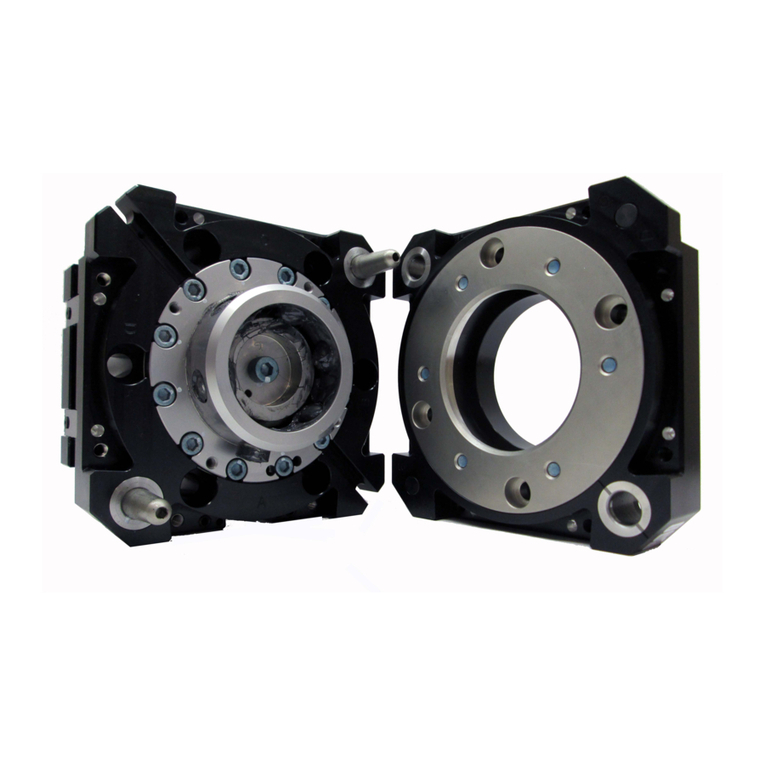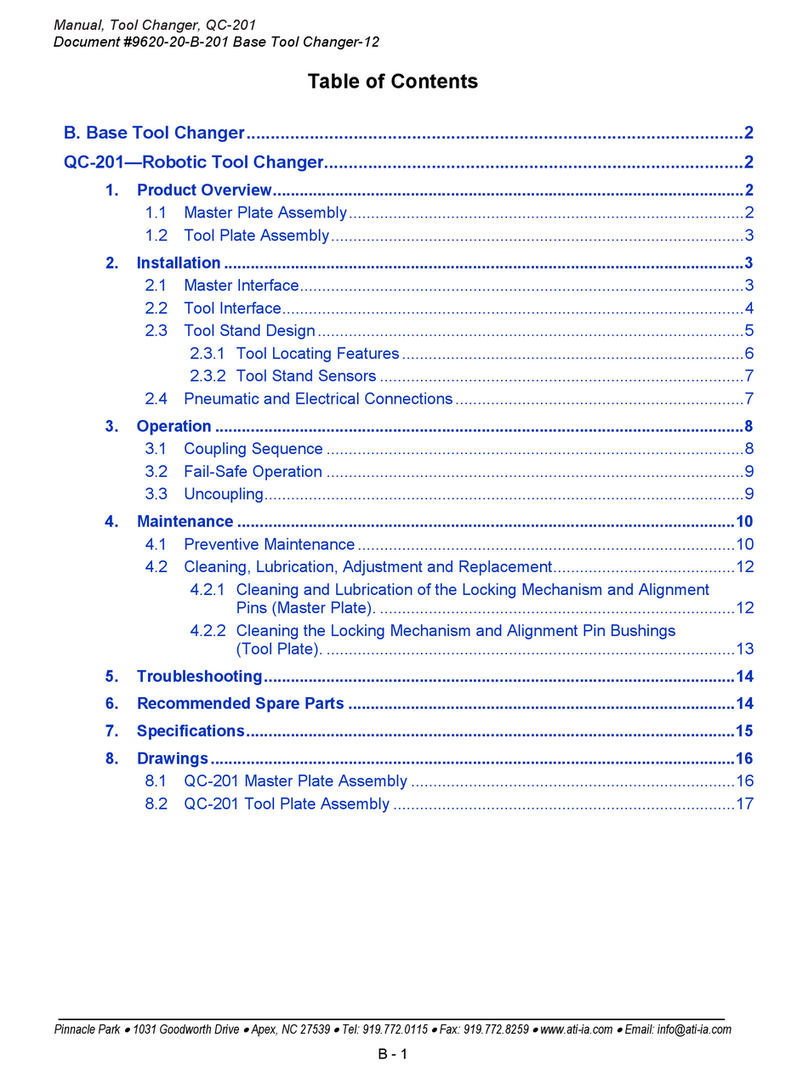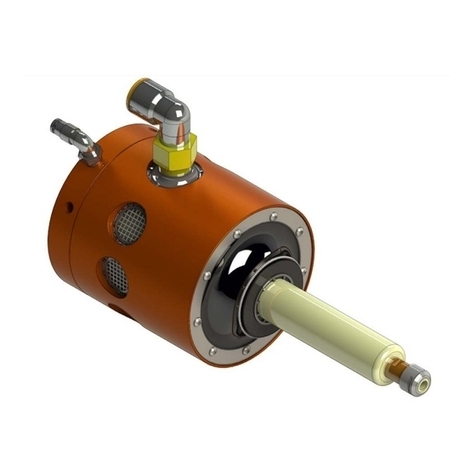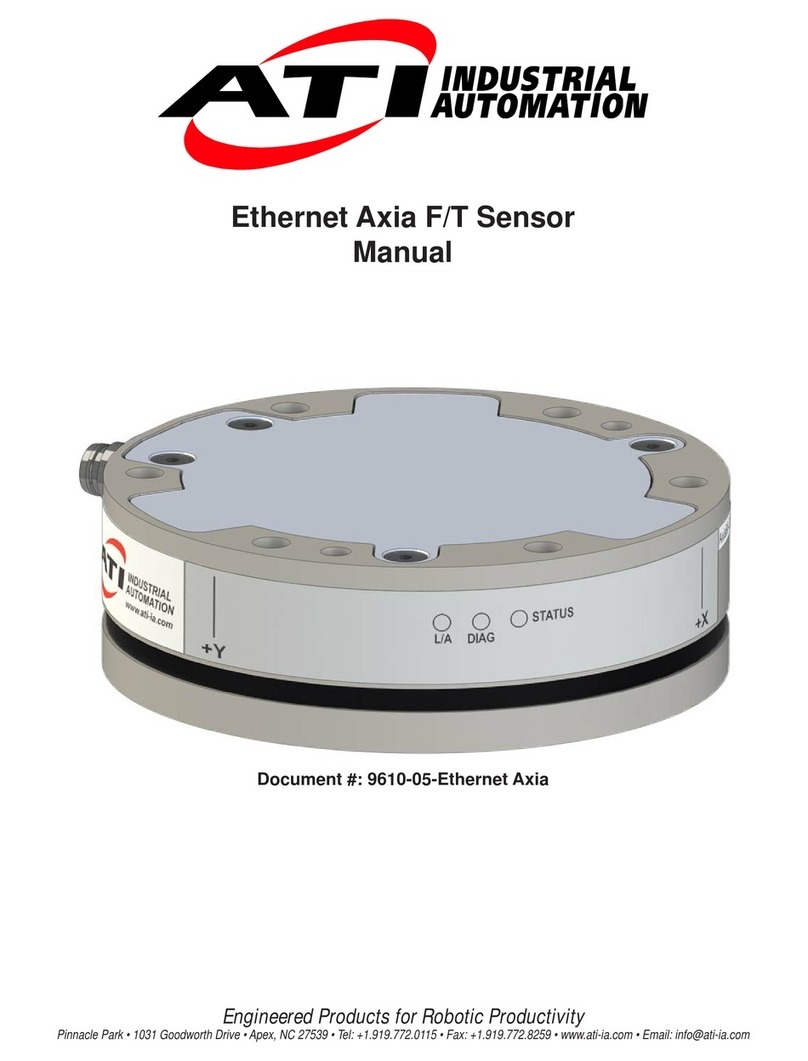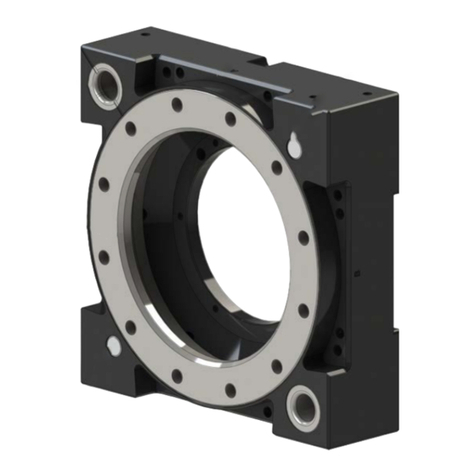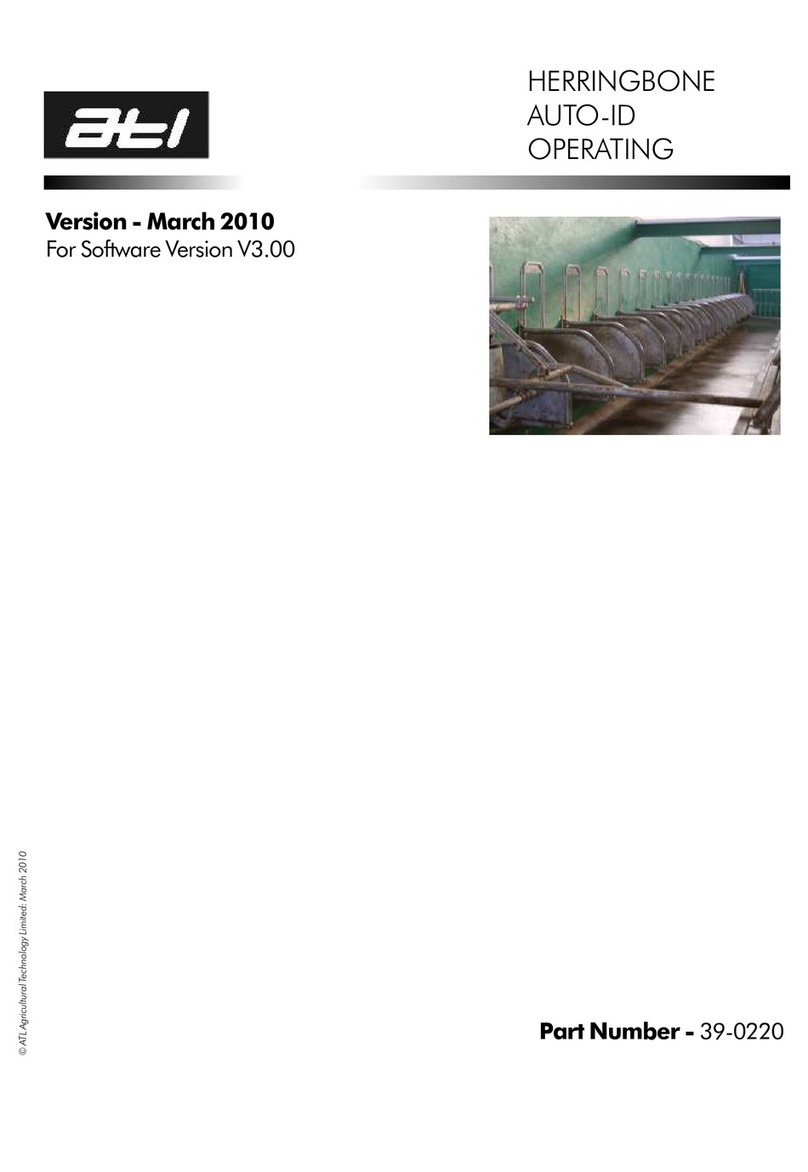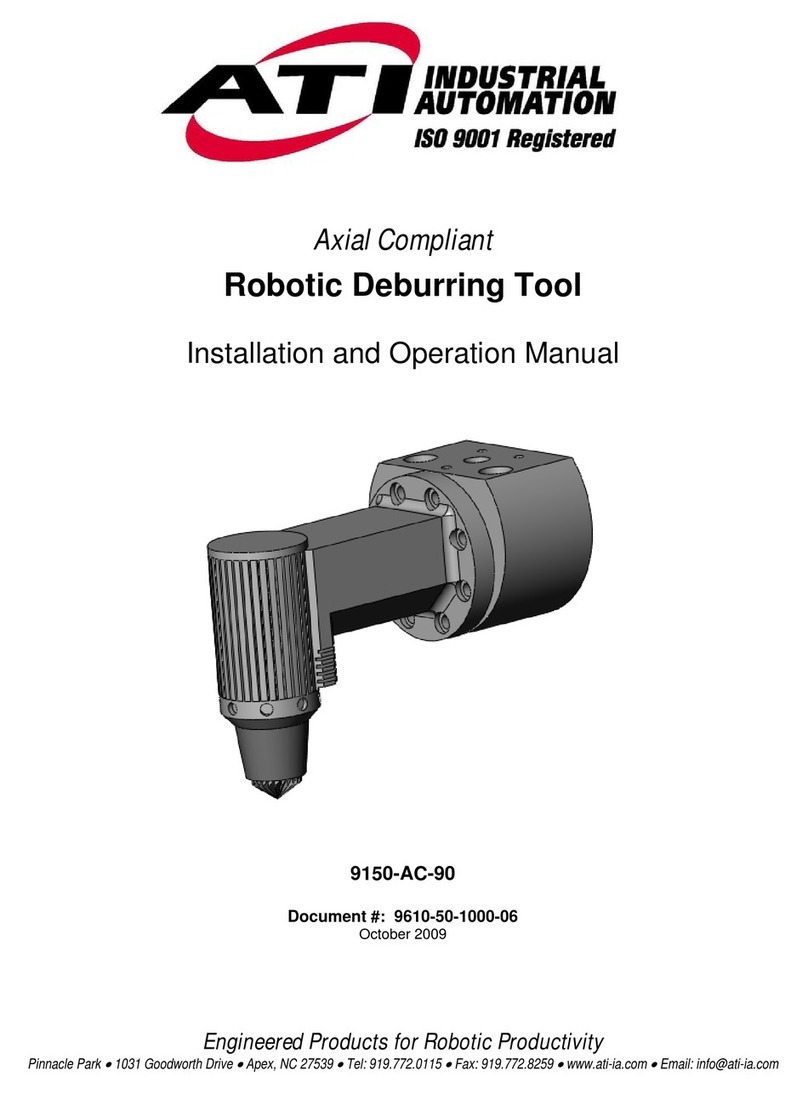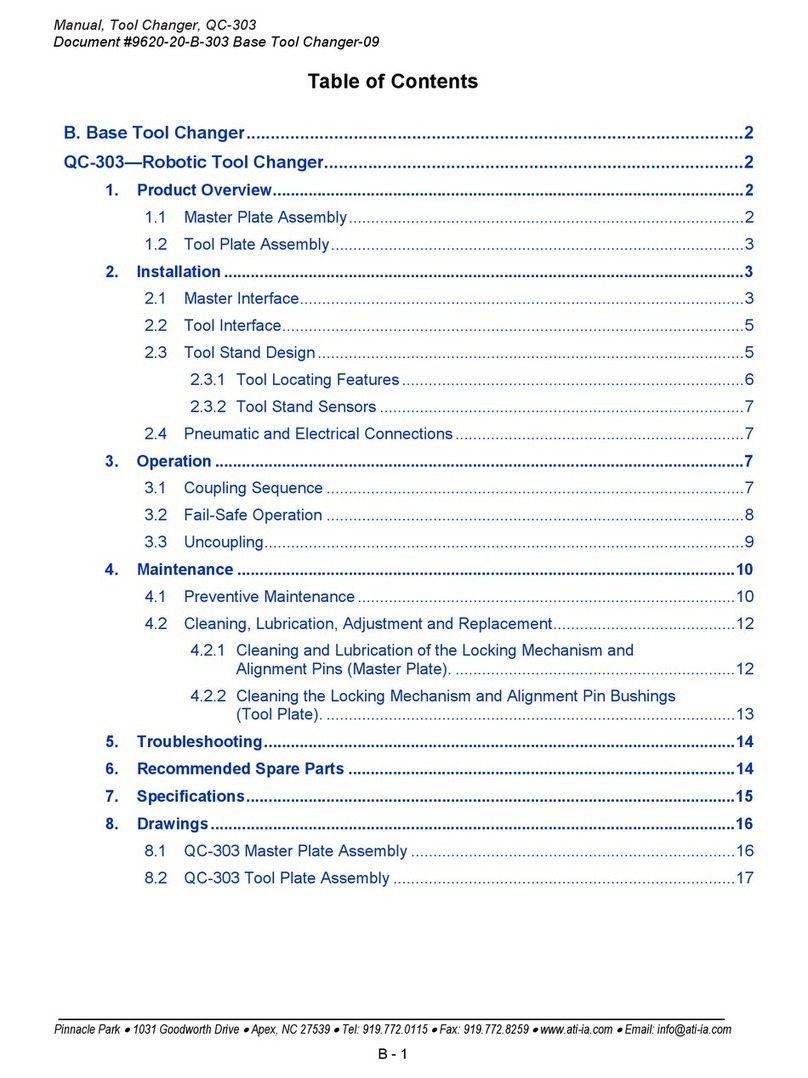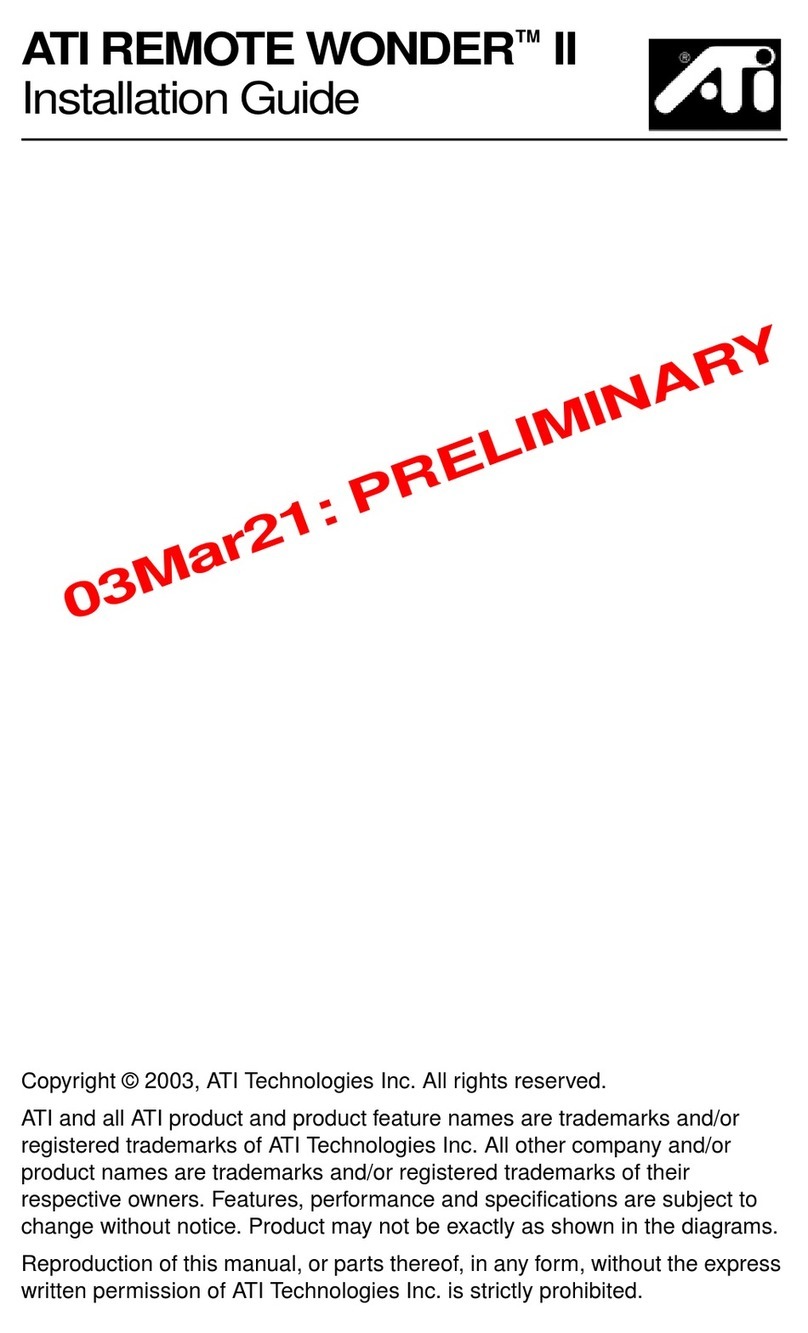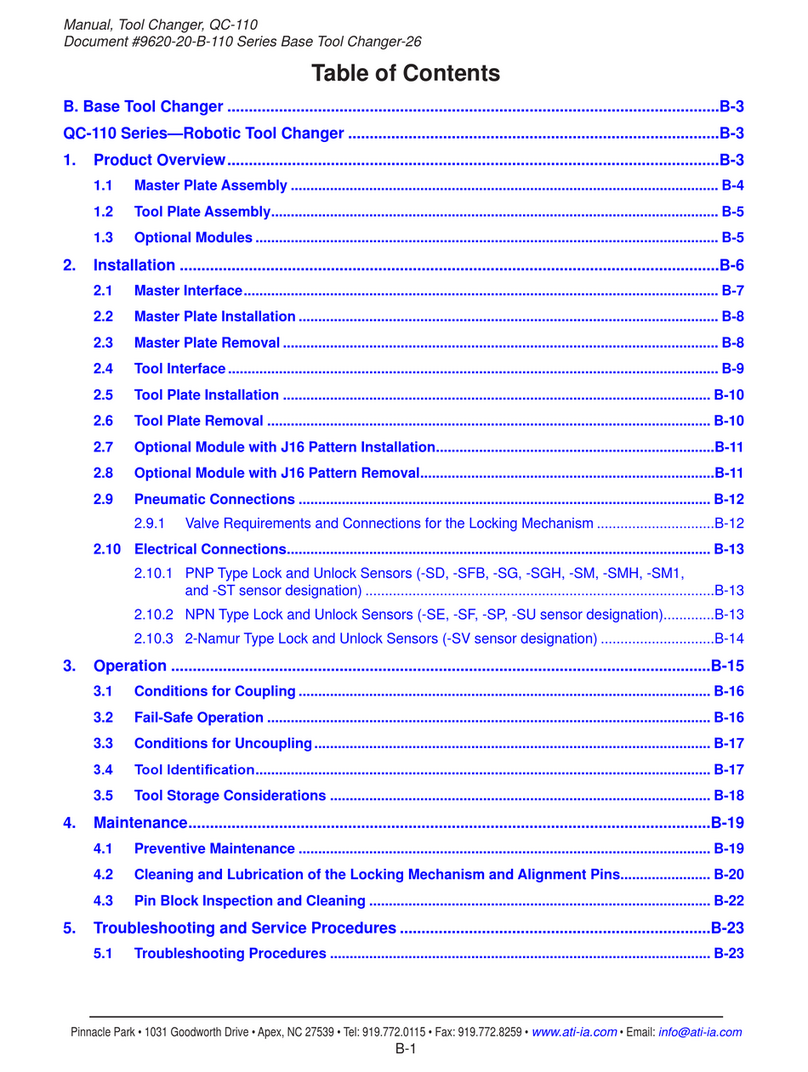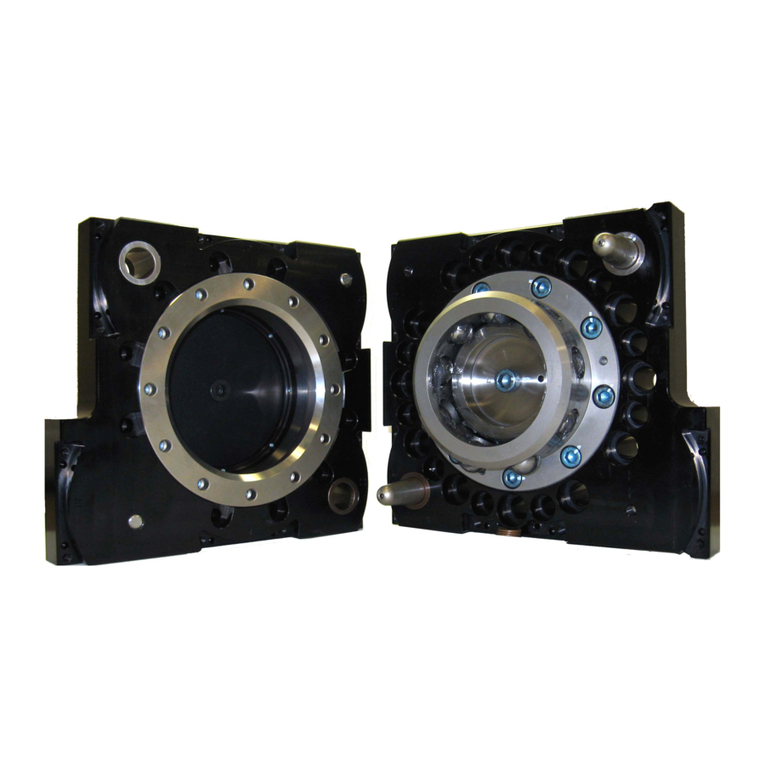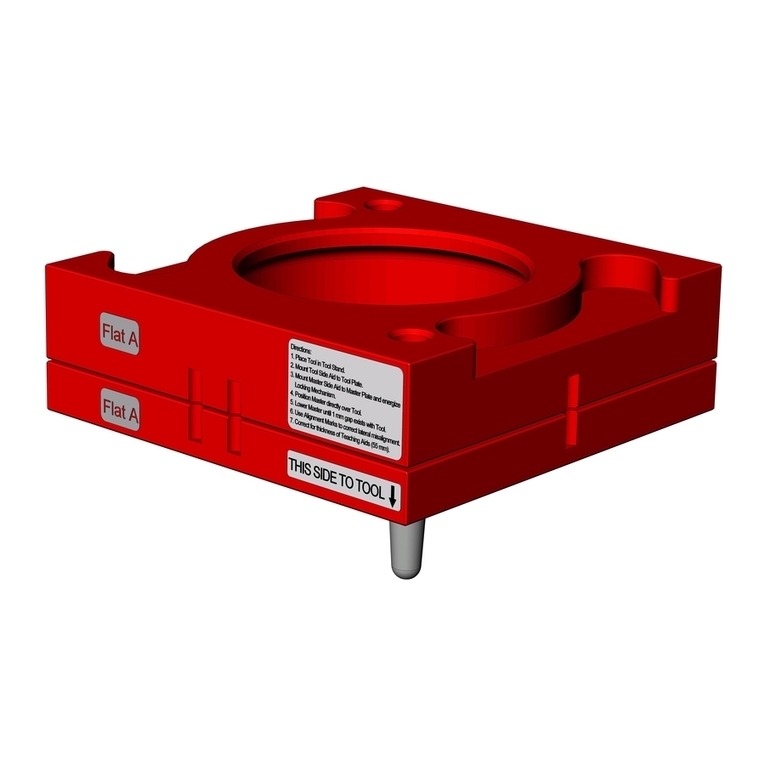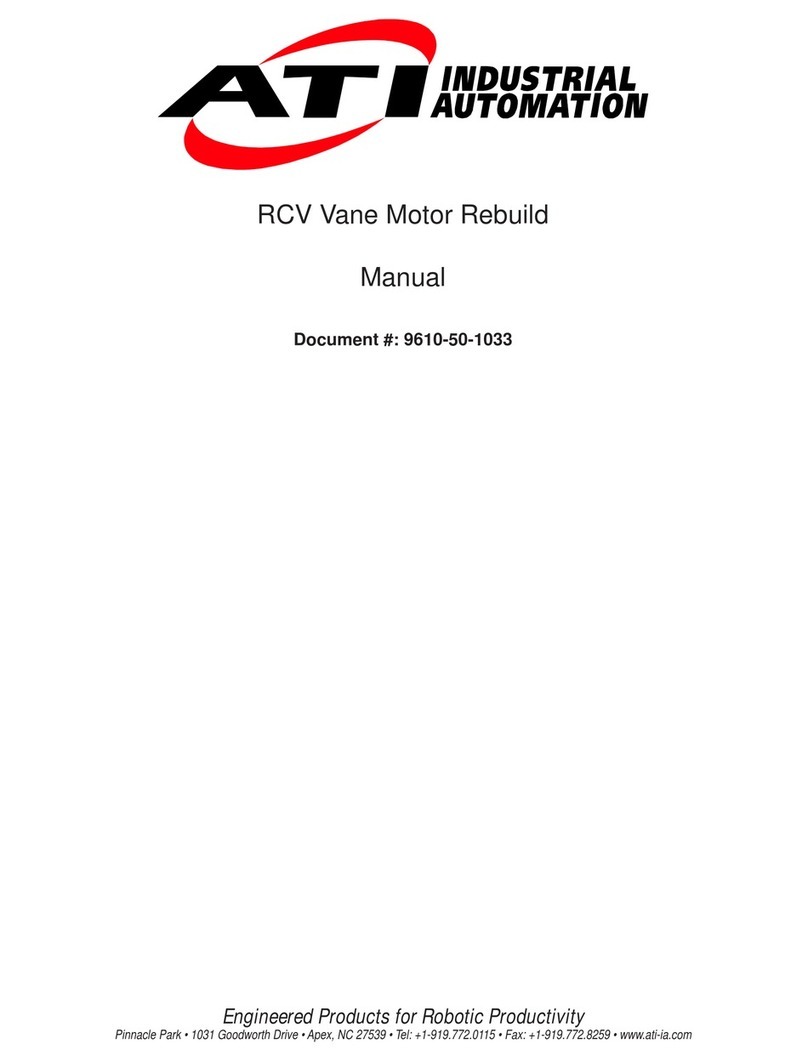
Manual, Robotic Tool Changer, QC‑300
Document #9610‑20‑2363‑02
Pinnacle Park • 1031 Goodworth Drive •Apex, NC 27539 USA• Tel: 919.772.0115 • Fax: 919.772.8259 • www.ati‑ia.com • Email: info@ati‑ia.com
6
1. Safety
The safety section describes general safety guidelines to be followed with this product, explanation of the
notication found in this manual, and safety precaution that apply to the product. More specic notication are
imbedded within the sections of the manual where they apply.
1.1 ExplanationofNotications
The notications included here are specic to the product(s) covered by this manual. It is expected that the
user heed all notications from the robot manufacturer and/or the manufacturers of other components used
in the installation.
DANGER: Notication of information or instructions that if not followed will result in
death or serious injury. The notication provides information about the nature of the
hazardous situation, the consequences of not avoiding the hazard, and the method for
avoiding the situation.
WARNING: Notication of information or instructions that if not followed could result
in death or serious injury. The notication provides information about the nature of the
hazardous situation, the consequences of not avoiding the hazard, and the method for
avoiding the situation.
CAUTION: Notication of information or instructions that if not followed could result
in moderate injury or will cause damage to equipment. The notication provides
information about the nature of the hazardous situation, the consequences of not
avoiding the hazard, and the method for avoiding the situation.
NOTICE: Notication of specic information or instructions about maintaining, operating,
installation, or setup of the product that if not followed could result in damage to equipment. The
notication can emphasize but is not limited to specic grease types, good operating practices,
or maintenance tips.
1.2 General Safety Guidelines
Prior to purchase and installation, the customer should verify that the Tool Changer selected is rated for the
maximum loads and moments expected during operation. Refer to product specications section in each
module of this manual or contact ATI for assistance. Particular attention should be paid to dynamic loads
caused by robot acceleration and deceleration. These forces can be many times the value of static forces in
high acceleration or deceleration situations.
The customer is responsible for ensuring that the area between the Master and Tool sides is clear of foreign
objects during mating and subsequent coupling. Failure to do so may result in serious injury to personnel.
DANGER: The gap between the Master and Tool sides is a pinch point. All personnel
should be prevented from placing any part of their body or clothing in the gap,
especially during actuation of the locking mechanism.
The customer is responsible for understanding the function of the Tool Changer and implementing the
proper fasteners and/or software to operate the Tool Changer safely. The Tool Changer should be controlled
such that there is no chance of locking or unlocking in a position that would endanger personnel and/or
equipment. If the Tool Changer is specied with Lock/Unlock (L/U) and Ready‑to‑Lock (RTL) sensing
capability, the status should be monitored and interlocks applied to prevent injury to personnel and
equipment.
All pneumatic ttings and tubing must be capable of withstanding the repetitive motions of the application
without failing. The routing of electrical and pneumatic lines must minimize the possibility of stress/strain,
kinking, rupture, etc. Failure of critical electrical or pneumatic lines to function properly may result in injury
to personnel and equipment.
All electrical power, pneumatic and uid circuits should be disconnected during servicing.

